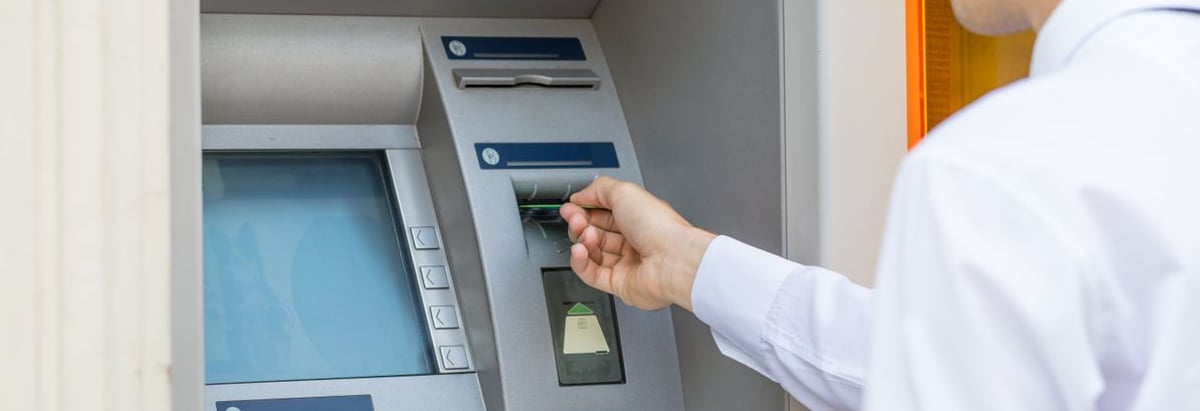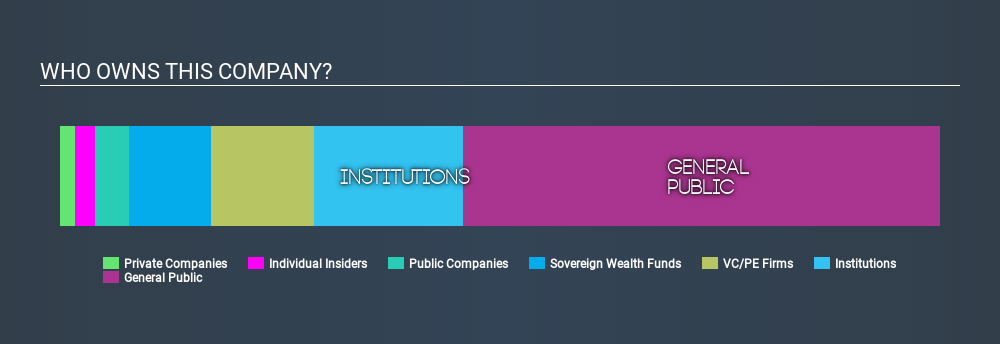What Kind Of Shareholders Own Masraf Al Rayan (Q.P.S.C.) (DSM:MARK)?

If you want to know who really controls Masraf Al Rayan (Q.P.S.C.) (DSM:MARK), then you'll have to look at the makeup of its share registry. Large companies usually have institutions as shareholders, and we usually see insiders owning shares in smaller companies. We also tend to see lower insider ownership in companies that were previously publicly owned.
Masraf Al Rayan (Q.P.S.C.) has a market capitalization of ر.ق29b, so it's too big to fly under the radar. We'd expect to see both institutions and retail investors owning a portion of the company. In the chart below, we can see that institutional investors have bought into the company. We can zoom in on the different ownership groups, to learn more about Masraf Al Rayan (Q.P.S.C.).
View our latest analysis for Masraf Al Rayan (Q.P.S.C.)

What Does The Institutional Ownership Tell Us About Masraf Al Rayan (Q.P.S.C.)?
Institutions typically measure themselves against a benchmark when reporting to their own investors, so they often become more enthusiastic about a stock once it's included in a major index. We would expect most companies to have some institutions on the register, especially if they are growing.
As you can see, institutional investors own 17% of Masraf Al Rayan (Q.P.S.C.). This suggests some credibility amongst professional investors. But we can't rely on that fact alone, since institutions make bad investments sometimes, just like everyone does. It is not uncommon to see a big share price drop if two large institutional investors try to sell out of a stock at the same time. So it is worth checking the past earnings trajectory of Masraf Al Rayan (Q.P.S.C.), (below). Of course, keep in mind that there are other factors to consider, too.

Hedge funds don't have many shares in Masraf Al Rayan (Q.P.S.C.). Qatar Holding LLC is currently the largest shareholder, with 12% of shares outstanding. Qatar Armed Forces Investment Fund is the second largest shareholder with 9.3% of common stock, followed by Qatar National Bank Asset Management, holding 4.8% of the stock.
Our studies suggest that the top 25 shareholders collectively control less than 50% of the company's shares, meaning that the company's shares are widely disseminated and there is no dominant shareholder.
While studying institutional ownership for a company can add value to your research, it is also a good practice to research analyst recommendations to get a deeper understand of a stock's expected performance. There are plenty of analysts covering the stock, so it might be worth seeing what they are forecasting, too.
Insider Ownership Of Masraf Al Rayan (Q.P.S.C.)
The definition of an insider can differ slightly between different countries, but members of the board of directors always count. Management ultimately answers to the board. However, it is not uncommon for managers to be executive board members, especially if they are a founder or the CEO.
I generally consider insider ownership to be a good thing. However, on some occasions it makes it more difficult for other shareholders to hold the board accountable for decisions.
Shareholders would probably be interested to learn that insiders own shares in Masraf Al Rayan (Q.P.S.C.). This is a big company, so it is good to see this level of alignment. Insiders own ر.ق642m worth of shares (at current prices). It is good to see this level of investment by insiders. You can check here to see if those insiders have been buying recently.
General Public Ownership
The general public, mostly retail investors, hold a substantial 54% stake in MARK, suggesting it is a fairly popular stock. This size of ownership gives retail investors collective power. They can and probably do influence decisions on executive compensation, dividend policies and proposed business acquisitions.
Private Equity Ownership
With a stake of 12%, private equity firms could influence the MARK board. Some investors might be encouraged by this, since private equity are sometimes able to encourage strategies that help the market see the value in the company. Alternatively, those holders might be exiting the investment after taking it public.
Public Company Ownership
It appears to us that public companies own 3.9% of MARK. It's hard to say for sure, but this suggests they have entwined business interests. This might be a strategic stake, so it's worth watching this space for changes in ownership.
Next Steps:
I find it very interesting to look at who exactly owns a company. But to truly gain insight, we need to consider other information, too. Consider risks, for instance. Every company has them, and we've spotted 1 warning sign for Masraf Al Rayan (Q.P.S.C.) you should know about.
But ultimately it is the future, not the past, that will determine how well the owners of this business will do. Therefore we think it advisable to take a look at this free report showing whether analysts are predicting a brighter future.
NB: Figures in this article are calculated using data from the last twelve months, which refer to the 12-month period ending on the last date of the month the financial statement is dated. This may not be consistent with full year annual report figures.
If you spot an error that warrants correction, please contact the editor at editorial-team@simplywallst.com. This article by Simply Wall St is general in nature. It does not constitute a recommendation to buy or sell any stock, and does not take account of your objectives, or your financial situation. Simply Wall St has no position in the stocks mentioned.
We aim to bring you long-term focused research analysis driven by fundamental data. Note that our analysis may not factor in the latest price-sensitive company announcements or qualitative material. Thank you for reading.
About DSM:MARK
Masraf Al Rayan (Q.P.S.C.)
Engages in Islamic banking, financing, and investing activities in Qatar and internationally.
Acceptable track record second-rate dividend payer.
Market Insights
Community Narratives



